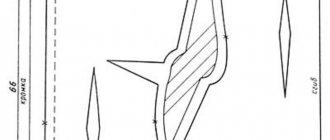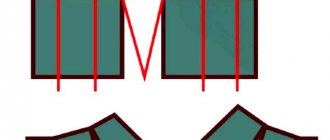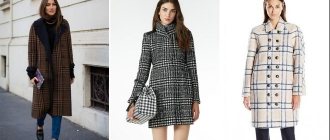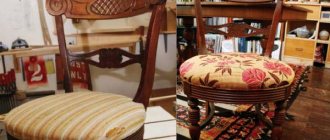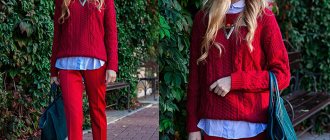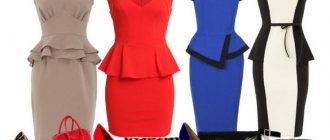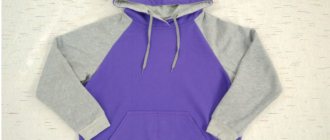What is a parka?
A parka is a warm, long jacket with a fur hood with a zipper. All elements of the product are aimed at performing heat-insulating, water-repellent and protective functions. Most often, the parka is made with a length below the hips and is distinguished by parallel ties at the waist and at the bottom of the product, the so-called drawstrings, which can be used to adjust the fit of the jacket at the waist, as well as its tightness to the body.
A mandatory element of a classic parka is a hood with a collar trimmed with natural or artificial leather.
with fur that, when buttoned, covers half the face. However, today they prefer to create either universal models with the ability to unfasten the hood, or cooler options without it at all.
The functionality of the parkas is also provided by large and convenient pockets in which you can hide your hands from the cold or some useful things.
Separately, it should be noted that the parka has a zipper lining, which makes the clothing more versatile. In the winter season - a fur lining, and in the fall or spring - a standard lining of the outer product.
History of the origin of the parka
Initially, parkas were warm, elongated jackets with a hood made of deerskin, the creators of which were the Eskimos who inhabited the northern part of America for a long time.
This invention later became the prototype for US military jackets, which were designed for operations in cold weather conditions, as well as Soviet Alaska jackets, which were very popular in the last century.
And only decades later the parka became a stylish element of secular fashion. Warmer options for very cold winters are especially popular in northern countries; for the population of warm countries of the world, manufacturers have created lighter versions of this jacket.
DIY parka materials
The most ideal material for a parka is Ventile, a tightly woven cotton fabric whose threads swell with moisture and protect against water getting inside the product. This amazing material was created for the clothing of RAF pilots who served in northern waters. The properties of the Ventile made it possible to keep a person alive in ice water for 20 minutes, which is why it is still used in the service of the British Air Force.
For secular parkas, more affordable materials are most often used, which are no worse in their characteristics than deerskin and ventil. Modern fabrics for sewing such a jacket have acquired a logical name - parka.
Today, one of the most popular materials is Canada parka, which is often classified as raincoat fabrics. The Rosetex store offers a wide range of Canada parka colors. The peculiarity of this fabric is its matte, dense surface, thanks to which it is classified as a noble and refined material. The Canada parka has a special coating and impregnation, which ensure that outerwear made from it perfectly protects from wind, cold and moisture.
Also in the Rosetex store you can buy fabric for sewing a parka - cotton parka on knitwear , characterized by a symbiosis of two fabrics: cotton and knitwear, which increase a number of advantages of this material. High-quality impregnated cotton will make the product breathable, water-repellent, warm and wear-resistant. Knitwear will enhance the thermal insulation properties of cotton, giving the product elasticity and softness.
It should be noted that a large selection of lining fabrics and furs complement
t is a complex of all the necessary materials for sewing a comfortable, warm and practical parka.
What can you wear with it?
After the parka has become part of your wardrobe, it’s time to think about what is best to wear it with. The peculiarity of the parka is that it is suitable for the most unusual outfits.
Of course, the ideal look would be a combination of a parka, skinny jeans, warm boots or unisex boots. However, you can experiment with different styles of skirts and pants. Short dresses also look great with a parka.
STORY
1. Lieutenant Stuart Namm in the winter of 1956 (after the Korean campaign). 2. Soldier in the fishtail park. 3. Photo card with congratulations from American soldiers: “Happy New Year from Korea 1952.” 4. Menacing fashions from the advertising campaign for the film Quadrophenia, based on the album of the same name by The Who. 5. American Marines in fishtail parkas, depicted on the packaging of models for assembly. 6. Standard markings of an authentic military fishtail parka. Inventory number - 73-N-66951.
Such outerwear appeared in 1951 - the American army equipped its infantry with it during the Korean War. There are two models of fishtail parkas: M-51 and M-65. The letter “M” means “military”, and the number corresponds to the year the model was introduced into uniforms. Unlike the cavalry tailcoat, the floors of which were split in two so as not to wrinkle when riding, the style of the infantry parka had a different utilitarian purpose. The war lasted for more than one year, and the infantry learned all the delights of monsoon storms. Complete with lacing at the hem, the double heel allows the jacket's thick fabric to be tied around the hips for added protection from strong winds.
Scooter mods, photo from the book "I'm One: 21st Century Mods"
Designed primarily for combat units such as the Army and Marines, the fishtail parka is designed to protect soldiers in two layers. The parka itself protects in “dry” frosts (-10 °C), and with a padded wool lining it passes the category “for ultra-low temperatures” (-51 °C). Over time, the US Army re-equipped its soldiers with clothing certified as the Extended Cold Weather Clothing System (ECWCS), and the fishtail parka was completely adopted by workers, city dwellers and fashionistas. At the end of the Korean campaign, the parkas were delivered to the allied British military stores as surplus combat uniforms, where they were noticed by mods who appreciated their functional merits: a fishtail parka was relatively inexpensive at that time, but was extremely practical and durable to use.
What is the difference between a parka and a jacket?
Longer, wider hood and double clasp. In addition, this outerwear was originally created as a warmer option - for frosty winters. If the new thing you bought seemed too light and rather spring-like, this only means that it was created for a different climate - a warmer one.
What's trending
Variety of colors and patterns. Beige, khaki, orange, brick, classic marsh, deep blue - you choose what your ideal jacket for the cold weather will be. The ideal combination is with denim trousers, tapered trousers, chinos.
Modern designers offer different models - including a parka... with a train. This is exactly how the founder of the Alexander Wang brand saw the constant attribute of the American military from the 50s.
Things to remember:
- Knee-length options will look good only if your height is at least 170 cm.
- The shorter the height, the shorter the jacket should be. Otherwise, it will look heavy and awkward.
- The fur used to trim the hood does not go well with satin and silk, or a straight skirt.
- Models in black, gray, and beige colors are especially relevant.
- The parka looks great with heavy boots and combat boots.
- The fabric of a quality product should be coarse, dense, and windproof.
- Samples with a stand-up collar deserve special attention.
WHAT ARE THE FISHTAIL PARKS SEWED FROM?
Initially, the fishtail parka was intended for infantrymen deployed in harsh weather conditions. Therefore, historically, the M-51 parka is made from the warmest components, with the development of technology supplemented by complex materials that now make life easier for the civilian population.
WOLF FUR
Wolf in natural habitat
In the classic version of fishtail parkas, the hood is trimmed with wolf fur, which belongs to the category of the warmest and most durable furs. This type of fur is highly valued among people working in extreme conditions; sleeping bags, jackets and fur coats for polar explorers and pilots are often made from it. In terms of its heat-protective properties, wolf fur is on average one and a half times more effective than beaver and muskrat fur. It is quite difficult to process it technically, but with proper design, the material retains the natural strength inherent in fur due to the harsh conditions of existence of wolves. For super-warm clothing, winter wolf skin, which is the furniest, is used. True, after the wolf was included in the list of endangered animals, hoods began to be trimmed with artificial fur.
WAXED COTTON
Thick cotton fabric before dyeing and waxing
Waxed cotton for fishtail parkas is made by impregnating cotton threads with paraffin. The textile becomes waterproof and suitable for making waterproof clothing and even for ship sails. From the mid-19th century to the mid-20th century, clothing made from waxed cotton was incredibly popular among sailors - waxing technology allows you to achieve an optimal balance of waterproofness and ventilation, in addition, clothing made from this material is less rigid, lighter and warmer. Military fishtail parkas typically used cotton mixed with nylon.
NYLON
Nylon yarn
The patent for nylon fiber belongs to the American company DuPont, which earns several billion dollars a year from this. In 1935, it was invented by the company's leading organic chemist, Wallace Carothers, who was faced with the task of creating a material similar in quality to silk. Since 1939, it began to be used in a wide variety of industries, not least in the production of clothing. Nylon fabrics retain their shape well, do not wrinkle, do not fade in the sun and have windproof properties. With proper processing, nylon becomes resistant even to X-rays and gamma rays, known for their increased penetrating ability.
MEMBRANE
Three-layer membrane fabric in prepared form
Modern premium brands use expensive and technologically advanced membrane fabric. It is made at different factories in its own way, with proprietary nuances, but the main advantage of such fabric is its increased wearing comfort: it does not allow water to pass through from the front side, and due to its design features, it releases steam from the inside, allowing the skin and body to breathe. This property of membrane fabric makes the material ideal for winter clothing.
WOOL
Italian mohair yarn
In the infantryman’s uniform report card, a warm lining for outerwear was a separate item, and it is due to this that the fishtail parka is classified in the category “for extremely low temperatures.” The insulation is made from mohair or alpaca wool.
Mohair, the wool of Angora goats, is one of the warmest natural materials. Mohair thread is twice as light as wool thread of the same length, but from a different breed of animal. Products made from mohair yarn are very warm. For the lining of the military parka, sixteen-ounce woolen fabric was used.
How to choose a parka with fur
When choosing a park, you should proceed from your preferences and financial capabilities. You should like the item, since it is purchased for more than one season. If there are no restrictions on money, then it is worth taking a closer look at branded models, which are characterized by high quality fur and fabric, finishing, and accessories. As a rule, these are luxurious pieces designed to make the owner stand out from the “crowd”.
A fur parka can be bought at an affordable price, for example, in clothing stores in the mid-price segment. Before purchasing, you should pay attention to the quality of seams, stitching, lining and, of course, fur. It is necessary that there are no threads or buttons sticking out anywhere, the zipper is well sewn, and the fur looks neat.
When choosing a parka with natural fur, you need to pay attention to its condition, be sure to ask the seller about its origin, name, processing (dying, cutting).
Nowadays, many private ateliers are engaged in sewing fur parkas. Some of them produce models of decent quality that are not inferior to elite brands. However, there are often cases when girls complain about parkas purchased from such sellers: after some time, the item loses its original appearance (sagging, fabric fades), problems with fur appear (loss, loss of gloss). Therefore, to avoid disappointment, it is better to purchase a fur parka from trusted or reputable stores.
MANDATORY ELEMENTS OF FISHTAIL PARKS
The fishtail parka stands among other front-line trends of our century thanks to its pragmatic design. All elements of the M-51 parka, both functional and basic, may undergo minor stylistic deformation. But the following details distinguish this model from any other.
HOOD
It’s hard to imagine a real fishtail parka model M-51 without a spacious hood. But if it is not needed, it can be hidden inside a specially designed collar. As in the M-65 model, here the hood can be unfastened using buttons.
ZIPPER, BELT, POCKETS
The military fishtail parka is fastened with a reliable metal zipper. To protect against blowing, the zipper is covered with a special windproof flap along the entire length of the jacket with tight buttons.
Another important functional detail of the fishtail parka is the encircling cord at the waist; when tightened, it protected American soldiers from a cold back, and fifteen years later attracted British fashionists as an additional style touch.
The pockets on the fishtail parka are cut diagonally at the waist level, just above the drawstring waistband, and are closed with a flap fastened with a metal button.
COLOR
For field trips, camouflage is important. However, camouflage did not appear until 1981, and fishtail parkas had a smooth khaki color. Khaki is the Hindi word for the color of the earth. This word entered the English language in the 19th century, when mercenary soldiers of the British army, Indians by origin, out of a desire to protect their snow-white uniforms from desert dust, began to dye it with coffee powder and curry. Gradually, khaki became the standard color for the uniform of not only the British, but also the American army.
LINING
Military technologists design uniforms so that they take up minimal space while being as functional as possible. In the case of the Korean War, the jacket had to be suitable for all weather conditions. The single-layer parka served as a raincoat and windbreaker, and together with the wool lining it became almost as warm as a Russian sheepskin coat. In the American army report card during the Korean campaign, the lining for fishtail parkas was listed as a separate item.
FLOORS AND LACING
The fishtail tails of the jacket are slightly reminiscent of a tailcoat, and if you tie them around each leg, you can additionally protect yourself from the cold. It is usually not immediately clear why there are so many laces at the hem, and in order to somehow justify their presence, the back ends are tied. The American Marines tied the back braid in pairs with the front so as to wrap both legs in the material - this is how they felt more comfortable during the monsoon season in Korea. Today's fashionistas have no need to heavily insulate, but the functional detail remains.
What is a parka?
This is a pressing question. Because many are sincerely perplexed as to how a parka differs from an ordinary warm jacket or down jacket. The answer is simple. The parka is really a distant relative of the jacket. The difference between them lies in the details, which we will discuss further.
First: length
Parka ends mid-thigh
. Which is understandable, because the main task of this clothing is to protect from cold, wind and moisture. The long hem prevents air from penetrating under the jacket.
Second: cut
He's free
. There are no tight parkas. Because otherwise they will not cope with their tasks, which we mentioned above. This allows you to wear a thick sweater underneath. And not even alone.
Third: material
Military parkas were made from nylon and other dense, practical synthetic fabrics. , blended fabric with the addition of cotton is increasingly used
. Its distinctive feature is the special twill weave of the fabric, characteristic of tweed and jeans. Why did you choose these materials? To extend service life and improve wear resistance.
Fourth: protective impregnation
The first parkas were worn by Eskimos. They sewed them from animal skins and put them on with the fur facing out. And to increase protection from moisture they coated it with fish oil.
Nowadays special impregnations
which
make the fabric waterproof
. But over time, their strength decreases. And then it disappears completely. To prevent your parka from getting wet, you need to periodically soak it with protective agents yourself. This can be done at home.
Fifth: drawstring at the waist
Usually it is hidden in a drawstring. Without it, the parka turns into a regular jacket. It is the drawstring at the waist that distinguishes it from the Alaska models.
.
Why is it needed? Now - to emphasize the waist. And initially, thanks to him, the wind did not get under the jacket.
Sixth: clasp
She's always double
. Most often this is a zipper closed with a Velcro strip. Although now more and more buttoned parkas are appearing.
Seventh: lining
In the 70s and 80s it was made from padding polyester. Now - from fluff and fur
. Classic parkas have a lining in a contrasting color. Previously it was orange or red. That is why Soviet fashionistas always wore their parkas unbuttoned to show off.
Now the lining can be any color
. There is an opinion that it should come unfastened. After all, this greatly simplifies care and allows you to turn a winter jacket into a demi-season one. But this option is optional.
If you are offered a parka without a lining, it is definitely not real. After all, this jacket must be warm. Otherwise, it will not fulfill its main function: protection from the cold.
WHAT TO WEAR WITH A FISHTAIL PARK
New fashion trends in the form of chinos and loafers are a typical gentleman's set of fashion from the sixties. Therefore, it is not surprising that the fishtail parka fits so well into the style of the modern urban fashionista - this competent appearance has been maintained for decades. In addition, a fishtail parka is perfect for our harsh weather - in the fall it will reliably protect the owner from rain and cold wind, and in winter, if there is a warm lining, it will help keep warm regardless of what is worn underneath - a woolen sweater or a thick flannel shirt.
The stylistic features of the fishtail parka are also beyond doubt; in this sense, it is absolutely utilitarian - it can be worn with a suit or with corduroy trousers, but a set that is as close to work aesthetics as possible is best suited - a checkered shirt, thick jeans and high-soled boots . The only thing you shouldn't do is wear cargo pants with a fishtail parka - such a combination risks turning you into an American infantryman from the Korean War, which is not a good look for peacetime.
The original fishtail parka model M-65 or M-51 can now only be found in a second-hand store, in a military equipment store, or ordered on eBay. Modern brands, of course, produce their own versions of fishtail parkas, but they still differ noticeably from the canonical models in the absence of certain details.
Sintepon - high-quality filler at an affordable price
Modern padding polyester is qualitatively different from the material of the 90s, which let in the cold and mercilessly rolled up. Today it is not inferior to natural materials in many properties. Its operating principle is such that intertwined microfibers have voids filled with air. This is the air insulator that retains heat. This fabric structure allows them to be considered “breathable”.
But you need to remember that a jacket with padding polyester is still more suitable for active people who, due to their occupation or desire, have to move a lot, and who do not spend much time in the cold. For this category of people, synthetic winterizer is enough to feel comfortable. This parka will hold heat a little worse than a jacket with a down lining. But at a low price, a jacket made from synthetic padding will last less. But the plus is that in 3-4 years you can buy a new model to replace the outdated one.
A big plus of padding polyester is its low sensitivity to weather changes compared to down or fur filling. Sintepon can return to its shape even if the jacket has been worn for a long time. And besides, it is more resistant to moisture. In a parka made of padding polyester you can stay warm even if it gets wet. It is indispensable in winters, when snowfalls are constantly replaced by rain and slush. And ease of washing and quick drying are another obvious plus in favor of this insulation.
Please note that padding polyester comes in different qualities. Therefore, when buying a jacket, pay attention to its weight. A jacket made of good quality padding polyester is quite light, but at the same time lightweight.
In addition, the padding polyester lining has the following properties:
— it does not cause allergies because it does not emit hazardous substances;
— has good thermal insulation: such a park will be comfortable at temperatures up to 12 °C;
- due to its structure, it can allow skin evaporation to pass through;
— easy to care for, washing and drying does not require special products.
Parkas made from padding polyester are made in various styles. For example, fans of the Military style will enjoy the most regular cut, many pockets and various shades of khaki. For fans of beauty and comfort, there are parkas in the Casual style with a practical top and elegant hood edges.
Choosing a parka with synthetic padding is the right choice!
When choosing a modern parka, you should pay attention to several points:
1. A parka for winter should have bottom lacing; when it’s cold, you can tighten it and keep warm. The existing drawstring on the hood allows you to hide from the wind and rain.
2. A classic jacket should have patch pockets, especially at the bottom, allowing you not only to put something, but also to warm your hands in the cold.
3. The jacket is fastened with a strong thick zipper that reaches all the way to the neck. Of course, designers add snaps and buttons, but the versatility of the jacket lies in its convenient fittings.
4. A traditional parka has a hood that must fit the required size and be secured with clasps.
5. You can purchase a padding polyester model that has an additional lining that can be detached. The fur trim of the hood is also removable.
Today, the parka is a fashionable and functional item. She can create beautiful sets with clothes in different styles, even with some sports or classic models. And the warm padding polyester lining makes it an indispensable item in slushy city winters.
Tags: how to choose • fashion • clothes • recommendations • tips
